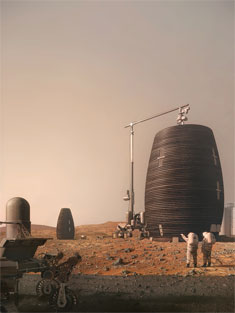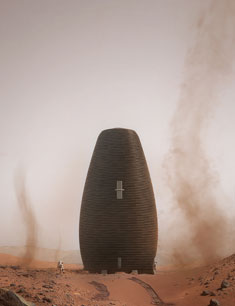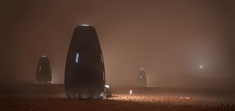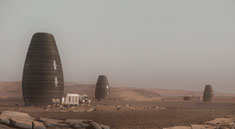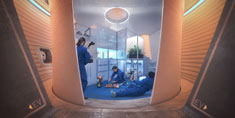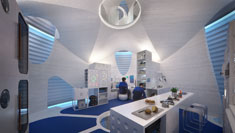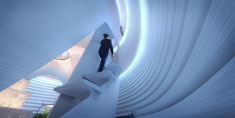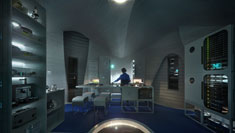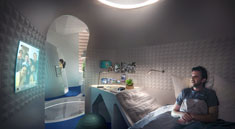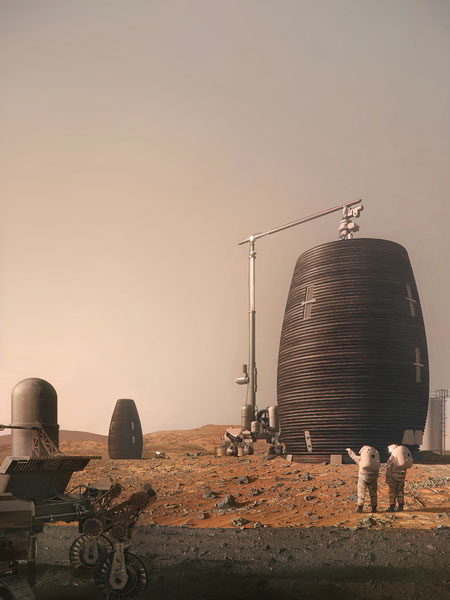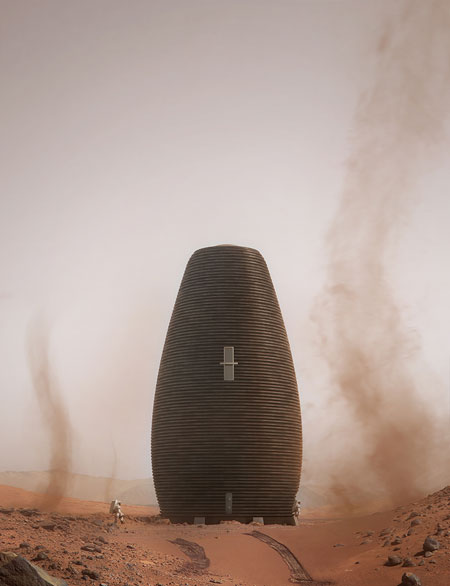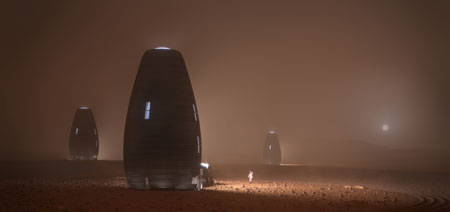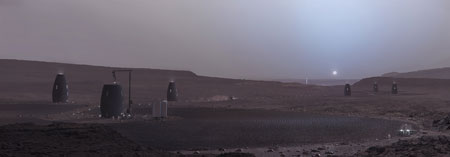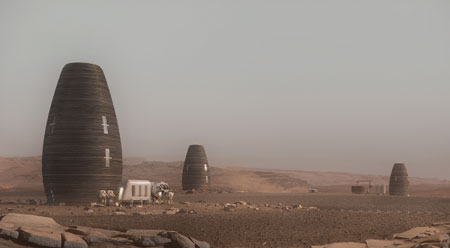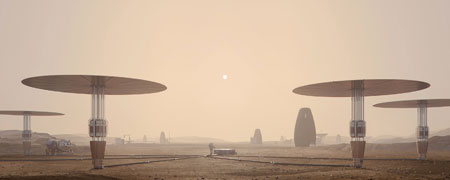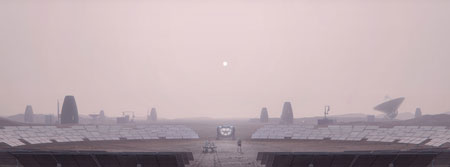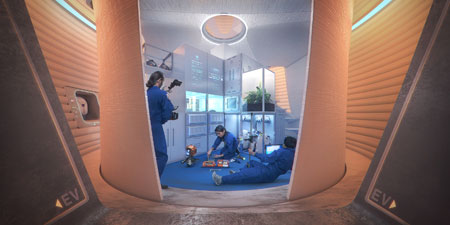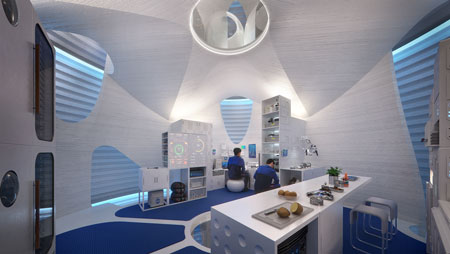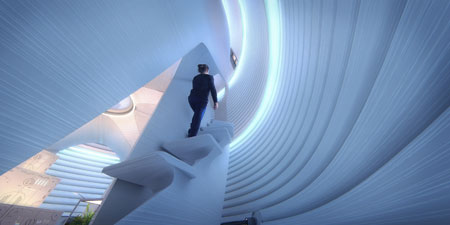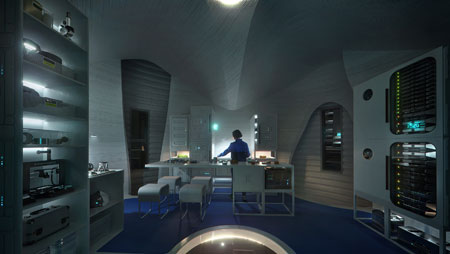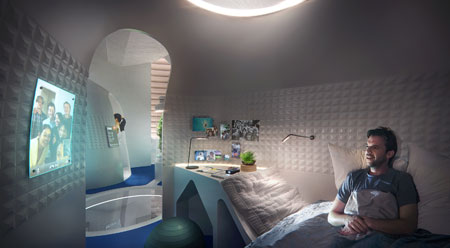
9th July 2020 3D-printed Mars habitat by AI SpaceFactory AI SpaceFactory, based in New York and founded in 2017, describes itself as "a multi-planetary architectural and technology design agency that's building life-sustaining architecture for Earth and Space." The company joined other entrants in NASA's 3D Printed Habitat Challenge, which required the construction of a prototype Martian habitat. The design produced by AI SpaceFactory – a cylindrical structure called MARSHA – pushed the thresholds of what is technically possible with 3D printing and involved the innovative use of composite materials. Researchers at AI SpaceFactory, in collaboration with Techmer PM, formulated a mixture of basalt fibre (which could be extracted from Martian rock) and renewable bioplastic (polylactic acid, or PLA – which could be processed from plants grown on Mars). This polymer composite outperformed concrete in NASA's testing for strength and durability, with up to three times greater strength in compression, and five times more durability in freeze-thaw conditions. Basalt fibre is known for its superb tensile strength – comparable to carbon fibre and Kevlar, yet much simpler to produce. It is also among the most effective thermal insulators known. The bioplastic, meanwhile, is an effective shield for ionising cosmic radiation, has low conductivity, and is dimensionally stable with the lowest coefficient of thermal expansion among all plastics. It is also non-toxic, unlike petrochemical-based plastics that emit high levels of toxic micro-particles such as styrene. Finally, the plastic is recyclable and can be manufactured in-situ. Combined, NASA believes this basalt and bioplastic composite material shows tremendous promise for use in Martian habitats of the future. The overall design impressed the agency so much, in fact, that it recently awarded AI SpaceFactory with first place, among a total of 60 competition entrants. In the final challenge, contestants had 30 hours to build 1/3 scale models using robotic construction technology. AI SpaceFactory won $500,000 for its efforts. The MARSHA habitat is designed to reduce the need for construction rovers working and moving around on unfamiliar terrain. A vertically telescoping arm is attached to a rover that stays still while the composite material is deposited layer by layer. Upon completion, the building could serve as a bright, multi-level, corridor-free home that minimises its footprint while maximising internal space. Standing tall on the surface, it would grant occupants a superior vantage point to observe the landscape outside. Four levels are proposed – a ground-level 'garage' with space suits, access to an exploration rover, data/power port and wet lab; a dry lab and kitchen above, serving as the main hub; a level above that with individual cabins, sanitation, and hydroponics garden; and a top floor with overhead skylight, exercise and recreational facilities. Miniature nuclear reactors and solar panels (included in the renderings below) would provide a power source. AI SpaceFactory believes the habitat could be used here on Earth too – perhaps in remote or currently inhospitable environments – and is now working to develop a "TERA" version.
Click to enlarge
Comments »
|
